#solar farms
Text
Since yall went so wild over those solar farms here some more--



^^some theoretical usage of colorful solar glass

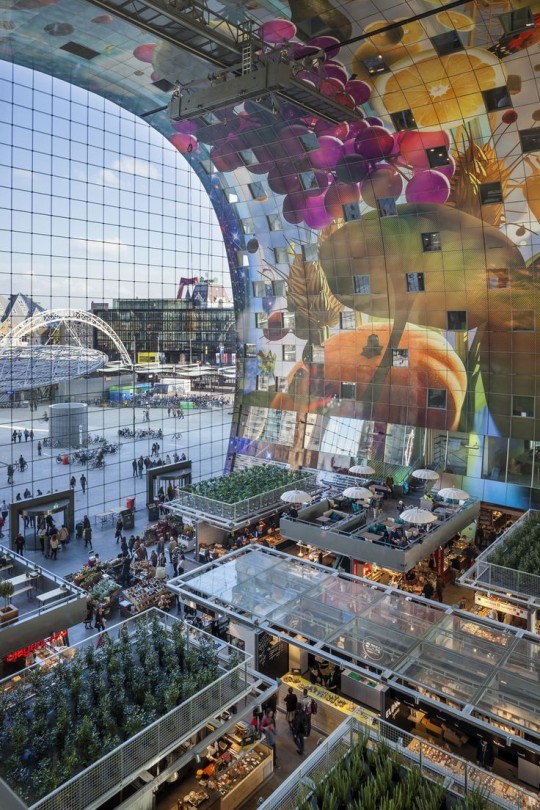
^^Here's some as artwork


^^ some canopy ideas for over plazas/markets
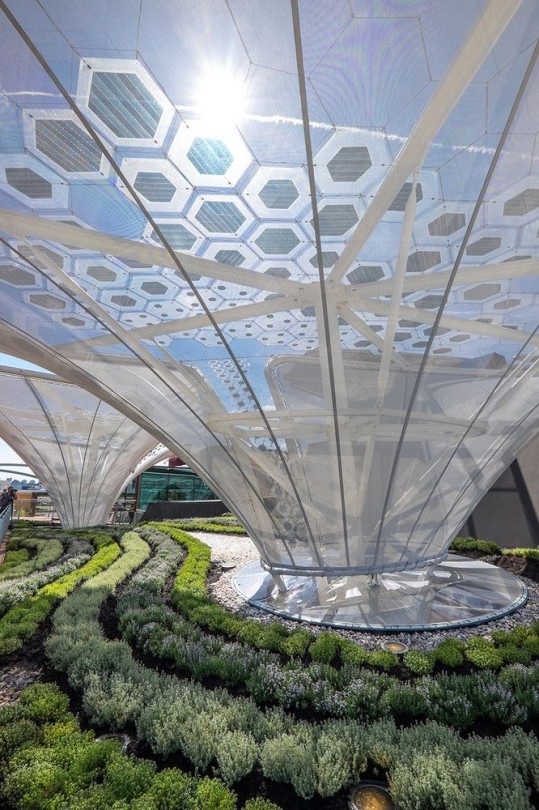

^^And some hybrid Solar/water catching structures as well
2K notes
·
View notes
Text
Insect populations flourish in the restored habitats of solar energy facilities
Pairing solar energy facilities on previously disturbed lands with habitat enhancement sounds like a logical win-win strategy to address energy and biodiversity challenges.
103 notes
·
View notes
Note
So happy to have found this blog!
But any chance do you listen to the podcast "How to Save a Planet" by Gimlet? It's focused on climate change solutions, and seems like something you and your followers might be into.
One of my favorite episodes of theirs is Sheep + Solar, a Love Story: which talks dual purpose solar farms, which can be used to graze animals/grow crops at the same time they provide solar power. :)
I do not currently listen to that podcast, but I just downloaded a few episodes to try out--thanks for the recommendation! Here's a link to the podcast for anyone else who is interested.
The sheep + solar combination is such an ingenious win-win situation. For those not familiar: if you have a solar farm, you don't want plants to grow high enough to shade your solar panels and a great way to prevent this (and make your farm even more productive) is to keep grazing animals around. Cows are too large to graze under most solar panels (as well as being large and destructive) and goats will climb on the solar panels and chew the wires, but sheep are perfect. The space under the panels is also great for growing certain crops that prefer shade.
Sustainable agriculture + sustainable energy.
#ask#submission#sustainable agriculture#sustainable energy#green energy#renewable energy#solar panels#solar energy#solar farms#sheep#good news#climate change#climate change adaptation
226 notes
·
View notes
Text
How solar power is changing life in Ecuador's Amazon basin
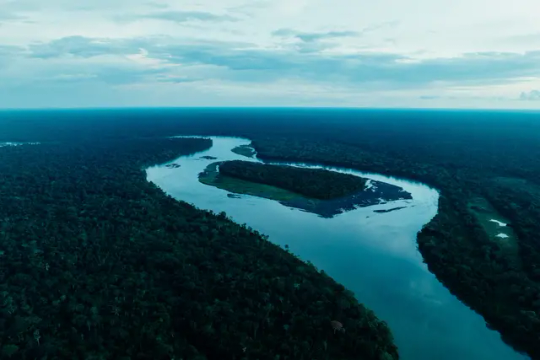
For more than 40 years, the local Indigenous people, the Achuar, have been advocating to stop oil development, which has ravaged large swaths of the Ecuadorian Amazon. But even as they fought against fossil fuels, gasoline was their only option to light their homes and power the boats tied to their livelihood. This area has the thinnest electric coverage in the country. But now a smattering of solar panels across 12 villages in a couple of Ecuador’s deeply forested eastern provinces are transforming life.
Solar power is shaping how they go about daily life in ways big and small, from how they get to work to how they negotiate their connections to the world beyond the Amazon.
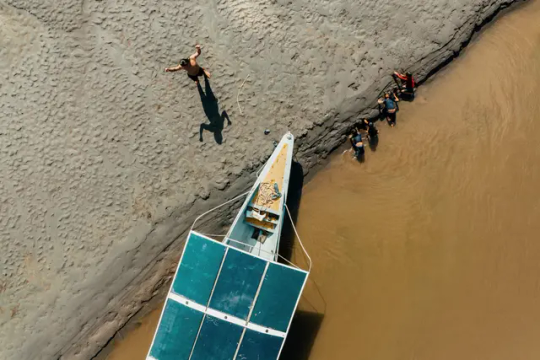
Photo above: A solar-powered electric boat
For generations, young men farmed the land, built huts or left their village to find work outside the jungle. Now solar panels are opening up other options.
In the Kapawi Solar Center, an open structure overlooking the Pastaza River, 20 solar panels power a dozen outlets strapped to bamboo poles. There, technicians such as Óscar Mukucham can charge up and hold workshops on how to install panels.
As a boy, Mukucham, now 23, had visions of solar boats moving through the river. Now he teaches others how to maintain them in the Amazon humidity.
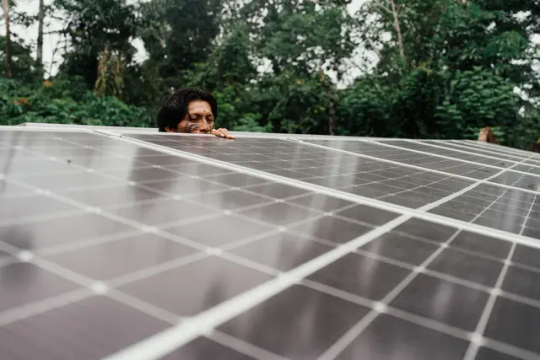
Solar power is also fueling eco-tourism. The Kapawi Ecolodge, a hotel managed by the community, boasts 64 panels that illuminate 10 cabins, the dining room and other hotel facilities for 24 hours a day.
The solar boats are so quiet, they make for ideal vessels for nature tours: They don’t scare away dolphins or birds.
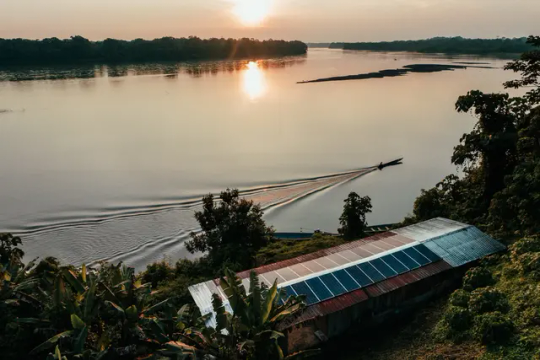
For Canelos, the lamps and panels are enabling a bigger vision: powering the Amazon without scarring it with roads and poles. Solar energy connects them to the world beyond their home, while preserving the ancient traditions that have sprouted from its rich rainforest floor.
“We cannot talk about the fight against extractive activities if we are consuming fuel,” he said. “Just as the sun makes life possible on the planet, it also allows the Achuar to keep their culture alive.”
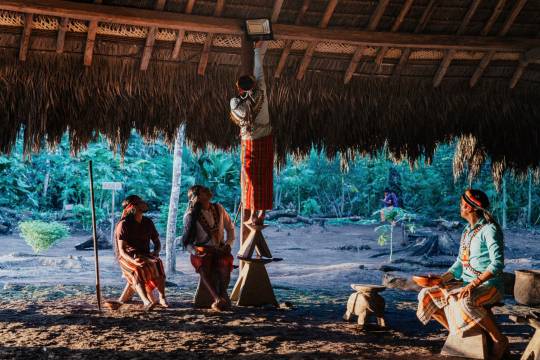
Source
#ecuador#amazon river#amazon basin#rural#solar power#solar power boats#solar farms#clean energy#transformation#latin america#indigenous peoples
8 notes
·
View notes
Text
youtube
China’s MASSIVE Desert Project Is About To Change The World. This is the biggest solar power plant in the United States, located in Kern, California. The Solar Star Plant is over 8 square miles and has a generation capacity of 579 megawatts, powering around 255,000 homes. This is impressive, but about 6,500 miles away, in this remote desert, there's a solar facility that could dwarf it … and just about every other solar power plant on earth. And it’s not alone.
Watch 5 BEST Things I Saw in Vegas at CES 2024
• 5 BEST Things I Saw in...
Video script and citations:
https://undecidedmf.com/chinas-massiv...
Get my achieve energy security with solar guide:
https://link.undecidedmf.com/solar-guide
Follow-up podcast:
Video version -
/ @stilltbd
Audio version - http://bit.ly/stilltbdfm
#Undecided with Matt Ferrell#solarpunk#USA#China#solar farms#solar farm#solar power#solar panels#green energy#renewable energy#Kern#california#Solar Star Plant#Youtube
5 notes
·
View notes
Link
Excerpt from this New York Times Op-Ed:
In Charlotte County [Virginia], population 11,448, forests and farms slope gently toward pretty little streams. The Roanoke River, whose floodplain includes one of the most ecologically valuable and intact forests in the Mid-Atlantic, forms the county’s southwestern border.
On a recent driving tour, a local conservationist, P.K. Pettus, told me she’s already grieving the eventual loss of much of this beautiful landscape. The Randolph Solar Project, a 4,500-acre project that will take out some 3,500 acres of forest during construction, was approved in July to join at least five other solar farms built or planned here thanks to several huge transmission lines that crisscross the county. When built, it will become one of the largest solar installations east of the Rocky Mountains. Although she is all for clean energy, Ms. Pettus opposed the project’s immense size, fearing it will destroy forests, disrupt soil and pollute streams and rivers in the place she calls home.
“I was so excited and hoped to see solar canopies over parking lots, solar panels on rooftops, solar panels on big box stores” after Virginia passed a 2020 law requiring the elimination of fossil fuels from its power sector by 2050, Ms. Pettus says. “I never dreamed it would involve so much deforestation and grading in a place I deeply care about.”
The conflict Ms. Pettus described is becoming increasingly common in rural Virginia, where a recent boom in solar farm construction has given many people pause. Conservationists and farmland advocates argue that the solar gold rush is displacing valuable forests and farms when panels could instead be going on already developed or degraded land, including abandoned industrial sites and landfills. Some even warn that a decades-long push to protect the Chesapeake Bay could be undermined by panel-driven forest loss.
Still, there’s plenty of space for those panels, even in a future in which most or all of our electricity comes from clean sources, and in which widespread deployment of electric cars and heat pumps ratchets up demand for electricity. Several independent estimates suggest the country could power itself with roughly the acreage currently dedicated to land most everyone would agree is already degraded. And up to 39 percent could be met by putting panels on roofs. “We have tremendous opportunity on rooftops, on parking lots, on other areas like that,” says Garrett Nilsen, the deputy director for the U.S. Department of Energy’s Solar Energy Technologies Office.
Yet rooftops and parking lots are not where most panels are going in Virginia, or elsewhere in the United States. A 2021 study found that most solar panels in Virginia end up in forests and on farmland. And nationwide, about half of new solar is built in deserts; more than four-fifths of the rest goes on farmland, forest land or grasslands, according to a separate analysis.
56 notes
·
View notes
Text
Payton Armstrong at MMFA:
Right-wing pastor and podcast host Drenda Keesee, who is running uncontested in November for a Knox County, Ohio, commissioner seat, has spread unhinged conspiracy theories about climate change, abortion, “satanic hordes” causing people to identify as LGBTQ, and global elites working to bring about a “New World Order.”
Notably, Keesee has claimed that solar farms are part of a plot to “create” food and energy shortages, said LGBTQ people “sentence themself to hell,” compared the LGBTQ movement to Adolf Hitler, and labeled the feminist movement an “occultic agenda” to “get women to fight to kill their children.” Keesee is also a proponent of the “Seven Mountain Mandate,” a theological approach that calls on Christians to impose fundamentalist values on all aspects of American life.
Keesee is running unopposed in November to be a Knox County commissioner after winning her primary on an anti-solar farm platform. Several local media reports have failed to document Keesee’s extreme rhetoric and views, including one from the local NPR affiliate covering her primary win.
Media Matters For America reports on unhinged right-wing Seven Mountains Dominionist pastor Drenda Keesee, who is running for a commissioner seat in Knox County, Ohio.
Keesee has trafficked in anti-LGBTQ+ extremism, climate denialism (eg. opposition to solar farms), antifeminism, and other far-right conspiracy theories.
She, along with her husband Gary, are pastors of Faith Life Church in New Albany, Ohio, northeast of Columbus.
See Also:
LGBTQ Nation: GOP candidate and pastor Drenda Keesee compares LGBTQ+ activists to Hitler & says demons are turning kids trans
#Drenda Keesee#Christian Nationalism#Climate Change Denialism#Anti LGBTQ+ Extremism#Knox County Ohio#Ohio#Seven Mountains Dominionism#Solar Farms#Gary Keesee#New World Order#Drenda On Guard#Antifeminism#Solar Energy
2 notes
·
View notes
Text

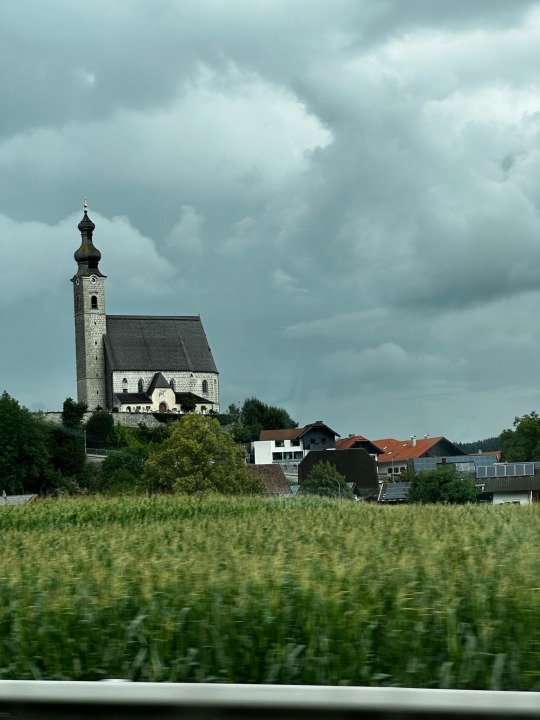


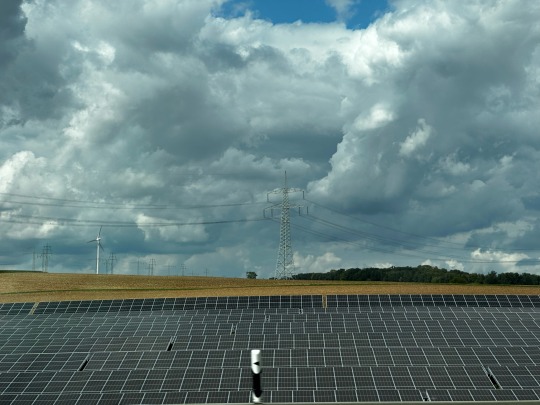
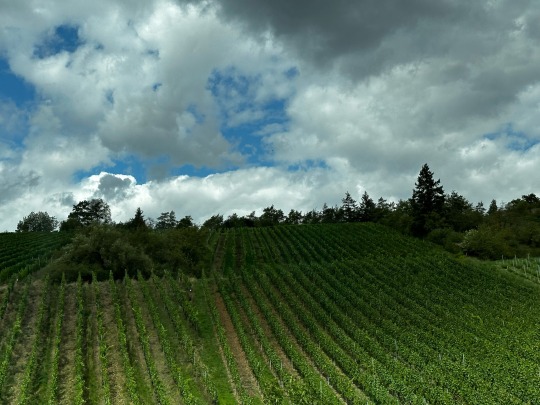

Driving on the Autobahn back to Frankfurt.
August 31st 2023.
#Summer 2023#Autobahn#Germany#Deutschland#travelling#driving#countryside#solar panels#solar farms#farmland#traffic#Austria#Europe#Europe trip#Germany trip#vacation#family vacation#lakeside#small towns#highway#freeway
2 notes
·
View notes
Text
3 notes
·
View notes
Text

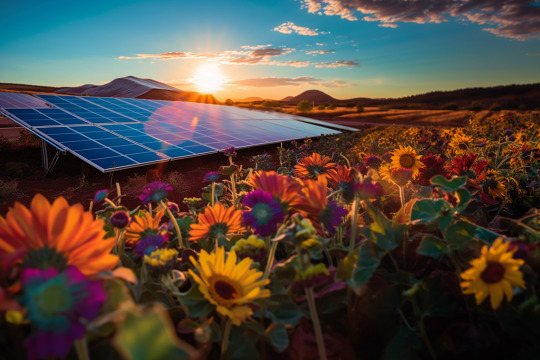
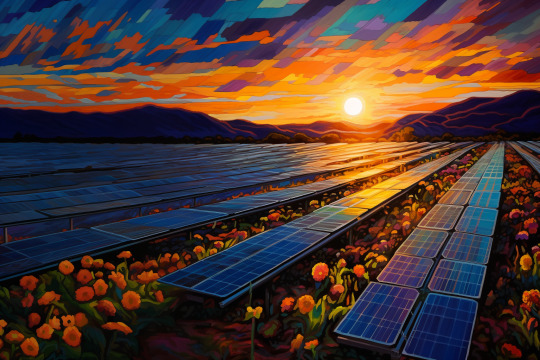
"Lovers alone wear sunlight" — E. E. Cummings
#solar#solarenergy#poetry#quote#e e cummings#quotes#solarpower#solar farms#solar energy#environment#pollinator friendly#floral solar#beautiful renewables#clean energy transformation#clean energy#solar inspiration#inspiration
2 notes
·
View notes
Text
From the ground, the new solar farm shimmers like a mirage oasis on a hot summer day. Instead of row after slanting row of shiny panels stretching taller than corn, this array, mounted directly on the earth, lies flat as water. From the air, it looks like an acre-sized swimming pool. Yet despite its modest stature, this new type of photovoltaic plant — one of five now producing a combined 2.5 megawatts of energy in California’s Central Valley — can match the output of conventional solar farms nearly three times its size.
In a meadow in southwestern Germany, solar panels stand upright in long, thin lines, like a series of fences. While farmers raise hay in the wide spaces between rows, the vertical power plant generates carbon-free electricity for the nearby town. Across the border in France, both wine and watts flow from panel-topped vineyards. Tea grows under solar panels in Japan, while pollinators are nurtured in the United States. And from Canada to Australia, utility-scale solar farms producing power for thousands of homes share their space with sheep.
These diverse approaches have the same goal — to help meet the burgeoning global demand for green energy by lightening the footprint of solar farms.
#cheryl katz#solar power#solar energy#solar farms#solar farming#land use#adaptation#technology#oh brave new world
4 notes
·
View notes
Note
I'm in Australia and its always been know that the solar farms and the solar panels on your roof can start fires.
Thank you anon, I think we need to start having real conversations again.
Love, JD 😜💋
5 notes
·
View notes
Text
Creating Biased Businesses Through Taxes
April 29 2024
by Kimberly Mann
How Wonderful! Jobs will be created and disposable income will enter the region! This was the reaction by many when they heard Amazon Data Services is building a center in their area.
What they didn’t hear was the reasons why it may not be a great idea. Reasons like the cost to citizens.
Citizen Funding
“Indiana Economic Development Corporation (IEDC) committed…

View On WordPress
#amazon#biden#data centers#Economic Development#Political#solar farms#tax dollars#tax incentives#wildlife
0 notes
Text
A platform designed to simplify the process of investing in energy assets, offering users access to a variety of investment opportunities in oil & gas, solar farms, battery storage facilities, and more. The website emphasizes the benefits of including energy assets in investment strategies for enhancing performance opportunities across economic conditions. It provides features such as direct access to energy assets with transparency, low fees, fractional ownership, and the use of AI for improved investment decisions. Energia caters to both first-time investors and experienced financial advisors looking for passive income, diversification, and inflation hedging through energy investments.
#Energy Investments#Oil & Gas#Renewable Energy#Investment Platform#Fractional Ownership#Artificial Intelligence#Financial Diversification#Passive Income#Inflation Hedging#Solar Farms#Battery Storage
0 notes
Text
FROM THE LOCAL SOCIALS: "We urge the BC Government to develop and implement policies, guidelines, and procedures for the responsible de-centralized development of solar power in British Columbia so that the challenges of climate change and global warming are not exacerbated by the removal of naturally functioning and critical ecosystems; so that developers can have greater confidence in planning and implementing their projects; so that energy users can be confident they are minimizing their global warming emissions without avoidable increase in harm to the global ecosystem." - READ MORE over on Rocky Mountain Naturalists (and please note that, whichever side of the fence you sit on, public comments need to be made by December 3rd)

#kimberley bc#kootenays#mountownlife#locally sourced links#hwy95eh#cranbrook bc#east kootenays#Rocky Mountain Naturalists#solar farms#british columbia#crown land
0 notes